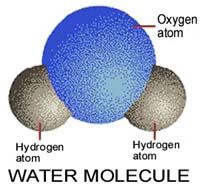Chemistry Of Life Test
Questions and Answers
- 1.
The atom is made of 3 subatomic particles. The subatomic particle found in the nucleus with a positive charge is the ___________.
- A.
Electron
- B.
Neutron
- C.
Proton
Correct Answer
C. ProtonExplanation
The question is asking for the subatomic particle found in the nucleus with a positive charge. The electron is not found in the nucleus and has a negative charge, so it is not the correct answer. The neutron is found in the nucleus, but it has no charge, so it is also not the correct answer. The proton is the subatomic particle found in the nucleus with a positive charge, making it the correct answer.Rate this question:
-
- 2.
The __________ is the smallest unit of matter.
- A.
Element
- B.
Atom
- C.
Molecule
- D.
Electron
Correct Answer
B. AtomExplanation
An atom is the smallest unit of matter. It consists of a nucleus, which contains protons and neutrons, and is surrounded by electrons. Elements are made up of atoms, and molecules are made up of multiple atoms bonded together. Electrons are subatomic particles that orbit the nucleus of an atom. Therefore, the correct answer is atom.Rate this question:
-
- 3.
An _______ bond is a bond in which electrons are transferred.
- A.
Covalent
- B.
Ionic
- C.
Double
Correct Answer
B. IonicExplanation
Ionic bonds are formed when there is a complete transfer of electrons from one atom to another. This results in the formation of positively charged ions (cations) and negatively charged ions (anions) that are attracted to each other due to their opposite charges. Therefore, an ionic bond is a bond in which electrons are transferred. Covalent bonds, on the other hand, involve the sharing of electrons between atoms, while a double bond refers to a covalent bond in which two pairs of electrons are shared between two atoms.Rate this question:
-
- 4.
An acid has a pH below ______.
- A.
7
- B.
8
- C.
9
- D.
10
Correct Answer
A. 7Explanation
An acid has a pH below 7 because pH is a measure of the acidity or alkalinity of a solution. A pH below 7 indicates that the concentration of hydrogen ions (H+) is higher than the concentration of hydroxide ions (OH-) in the solution, making it acidic. As the pH decreases below 7, the acidity of the solution increases.Rate this question:
-
- 5.
A base has a ph above _____.
- A.
9
- B.
8
- C.
7
- D.
10
Correct Answer
C. 7Explanation
A base has a pH above 7 because pH is a measure of the acidity or alkalinity of a solution. A pH value below 7 indicates acidity, while a pH above 7 indicates alkalinity. Therefore, a base, which is an alkaline substance, will have a pH value above 7.Rate this question:
-
- 6.
Water is made of 1 oxygen molecule and _____ hydrogen atoms.
- A.
3
- B.
2
- C.
1
- D.
5
Correct Answer
B. 2Explanation
Water is made of 1 oxygen molecule and 2 hydrogen atoms. This is because the chemical formula for water is H2O, which means that each water molecule consists of 2 hydrogen atoms bonded to 1 oxygen atom. Therefore, the correct answer is 2.Rate this question:
-
- 7.
Gold is an example of a ______.
- A.
Molecule
- B.
Element
- C.
Atom
- D.
Covalent bond
Correct Answer
B. ElementExplanation
Gold is an example of an element because it is a pure substance that cannot be broken down into simpler substances by chemical means. Elements are made up of only one type of atom, and gold consists entirely of gold atoms. It is a lustrous metal with a distinct yellow color and is known for its high density and malleability. As an element, gold is listed on the periodic table with the symbol Au (from the Latin word "aurum").Rate this question:
-
- 8.
The water molecule is _________, because there is an uneven distribution of electron within the molecule.
- A.
Uneven
- B.
Weird
- C.
Polar
- D.
Strange
Correct Answer
C. PolarExplanation
The water molecule is polar because there is an uneven distribution of electron within the molecule. This means that the oxygen atom attracts the shared electrons more strongly than the hydrogen atoms, resulting in a partial negative charge on the oxygen atom and partial positive charges on the hydrogen atoms. This polarity gives water its unique properties, such as its ability to dissolve many substances and form hydrogen bonds.Rate this question:
-
Quiz Review Timeline +
Our quizzes are rigorously reviewed, monitored and continuously updated by our expert board to maintain accuracy, relevance, and timeliness.
-
Current Version
-
Mar 22, 2023Quiz Edited by
ProProfs Editorial Team -
Jun 02, 2012Quiz Created by
Amadalikhan2009
 Back to top
Back to top




